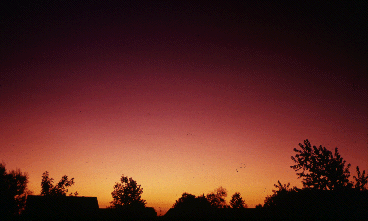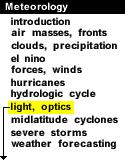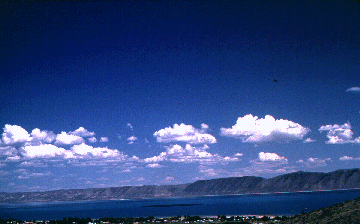
|
Scattering is a rapid process whereby light is actually absorbed by a particle and then quickly emitted in another direction.

Scattering particles can be air molecules,
dust particles, water droplets or pollutants, which scatter
incoming sunlight (or moonlight) in all directions,
similar to how a pinball bounces around in a pinball machine. During the
scattering process, no energy is lost or gained, so no temperature changes
occur.
Selective scattering occurs when certain particles are more effective
at scattering a particular wavelength of light (Rayleigh
scattering).
Air molecules (oxygen and nitrogen, for example) are small in size,
and thus more effective at scattering
shorter light wavelengths (blue and violet), producing
blue skies visible on a clear sunny day.

Photograph by Ron L.Holle
When the sun is low on the horizon and the atmosphere is loaded with
particles, only longer wavelengths of light (yellow and red)
are able to penetrate the
dense atmosphere.
Other wavelengths of visible light
are simply scattered away and never reach our eyes, producing in a colorful
sunset at the end of the day.
|






